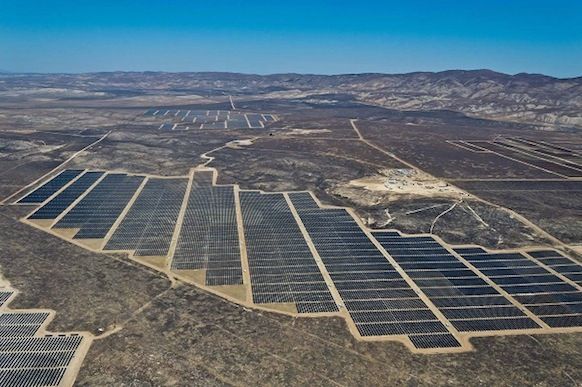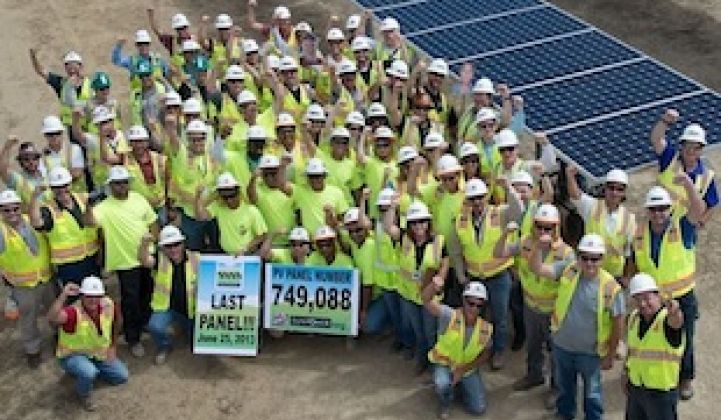It’s the equivalent of, oh, about 50,000 home solar photovoltaic systems -- 749,088 panels. They’re all in place now in San Luis Obispo County at the 250-megawatt California Valley Solar Ranch.
SunPower, builder and the operator of the plant for owner NRG, said crews finished the job last week. The panels are on horizontal single-axis trackers that boost efficiency by keeping the panel square with the sun as it moves east-to-west across the sky.

SunPower said it expects final commissioning of the plant “in the coming weeks,” and with that, California will have a new leader in the category of the largest PV power generator in the state. But it won’t be for very long. In the same region of Central California -- the Carrizo Plain, a stretch of grassland about 50 miles long and ten to fifteen miles wide that is separated from the Central Valley by a modest line of peaks called the Temblor Range -- First Solar is building a 550-megawatt PV plant, called Topaz, for MidAmerican. Then there’s the 579-megawatt Antelope Valley Solar Projects, located about an hour north of Los Angeles.
As you can see in the picture above, California Valley Solar actually consists of a number of fairly distinct arrays -- ten, to be exact. So while the entire site is 4,700 acres, less than one-third, 1,500 acres, is covered in panels or buildings. NRG counts the remaining 3,200 acres as “permanently conserved and managed to meet conservation objectives for a range of species.”
Some of the site’s protections came about under pressure from conservation groups. Three in particular -- Sierra Club, Defenders of Wildlife and Center for Biological Diversity -- worked to gain concessions on both California Valley and Topaz. The groups feared the impact of the projects on the endangered San Joaquin kit fox and giant kangaroo rats. To win government approval, the companies had “agreed to significant commitments to protect and preserve species,” the groups said, and then with the settlement came “additional environmental benefits”:
- More than 9,000 acres will be added to the 17,000 acres of land required to be permanently protected and preserved under the permits, resulting in a total of approximately 26,000 acres, or about 40 square miles, of the Carrizo Plain receiving protection as a result of these projects.
- Thirty miles of fencing will be removed from the area, allowing for greater wildlife movement around the projects. Additional beneficial enhancements will be made to the wildlife-friendly fencing around the solar system arrays.
- No rodenticides will be used in the construction or operation of the projects, and the solar companies will help fund efforts to eliminate rodenticides on the Carrizo Plain and in other San Joaquin kit fox conservation areas.
- Topaz and SunPower will make additional significant financial contributions to help San Luis Obispo County acquire lots in the largely undeveloped subdivision in the Carrizo Plain to restore for wildlife conservation.
***
Editor's note: This article is reposted in its original form from EarthTechling. Author credit goes to Pete Danko.



